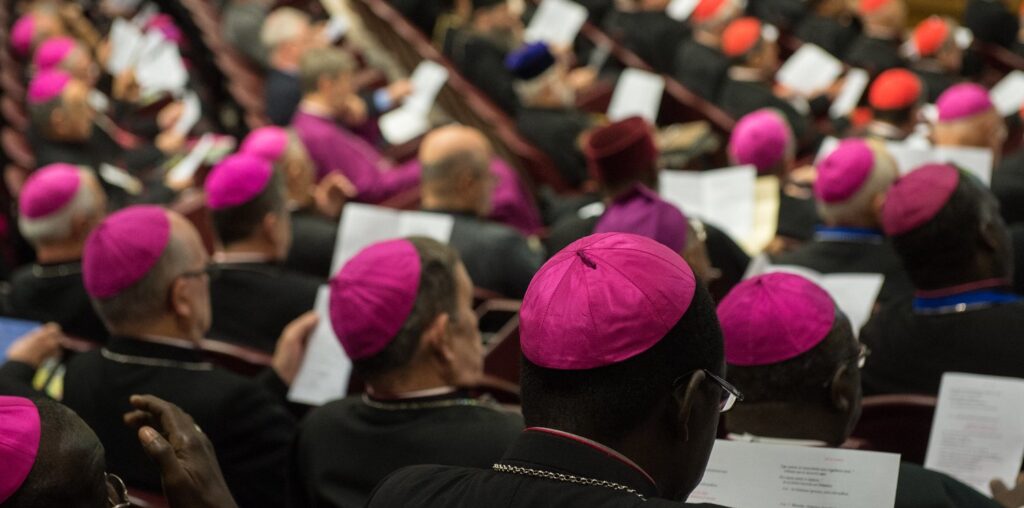
Change comes slowly to Vatican II
Vatican II began in 1962 much like Vatican I: an all-clerical, all-male assembly.
Women initially sought influence in similar ways as well. Every night the Belgian journalist Betsie Hollants made a pot of soup and held open house for the council fathers. Soup broth and red wine were cheap, she recalled, but they made for convivial gatherings that kept her informed about the council. Responding to women’s request to participate formally, however, one dismissive cardinal reportedly suggested that they should “try again at Vatican III or IV.”
As the council proceeded, the absence of women seemed increasingly incongruous. Douglas Horton, an American Protestant pastor invited as an observer, noted the “air of artificiality” of an assembly without women. By the second session in 1963, Mildred Horton and other non-Catholic observers’ wives could attend some events, but no Catholic women were present. When the Catholic press corps received Communion, a Swiss Guard physically prevented the only female journalist from approaching the altar.
Pope John XXIII had declared “aggiornamento” – bringing the church up to date – the order of the day, but these incidents made many wonder if aggiornamento was possible without women.
Signs of change arrived at the fourth session in September 1964, when the new pope, Paul VI, appointed 23 women auditors: 10 religious and 13 lay women. They participated in preparatory sessions, especially those concerning the laity, where they were, in Paul’s words, “experts in life.”
No woman ever addressed the council fathers; their efforts to do so were rebuffed, but their presence in preliminary meetings was significant. In a discussion of marriage, for instance, Luz María Alvarez-Icaza — a Mexican woman who, with her husband, José, was an auditor — informed the assembled clerics that she was confident that their mothers had conceived them in acts of love, not animal lust.
One of the most significant changes to emerge from Vatican II was the reassessment of marital sex. Whereas the church once viewed sex between husband and wife as a check on humanity’s essentially sinful nature, new teachings described it as a positive expression of love.
More than ‘flowers and light’
The documents produced by Vatican II say relatively little about women, which was, arguably, a victory for female auditors. Many of them mistrusted the council fathers’ view of women as a separate, even foreign, species.
The Australian theologian Rosemary Goldie, listening to the eminent French theologian Yves Congar’s extravagant descriptions of women’s role, told him, “You can cut the references to women as flowers and light. … We don’t need any of that grandiose stuff. … All we want is to be treated as full human beings.”
“Women are not ‘a category’ in the church,” Sister Mary Luke Tobin, an American, maintained: “Men and women are the church.”
Thanks to these 23 “mothers of the council,” Vatican II’s teachings on women are, for the most part, incorporated into its larger treatment of human dignity, not segregated into separate chapters on women’s nature.
Possibilities today
How much will it matter that 54 voting women have replaced the hostesses, writers and auditors of Vatican I and Vatican II? We probably won’t know for a long time – decades at least.
Revolution is unlikely. Many Catholics support allowing women to serve as deacons – ministers who can perform some, but not all, of the priest’s duties. That possibility, however, is off the synod table, handed to a commission for further study. The ordination of women as priests seems impossibly distant.
It could be, however, that 54 female voices teach their church how to speak of and to women as equals. Or it may be that those voices disappear amid the cacophony of nearly 400 participants. As Pope Francis reminds both conservatives and progressives, the synod is not a parliament. Votes are counted, but as a step toward discernment of truth, not a moment of decision.
This piece is republished from The Conversation.

